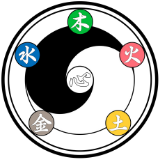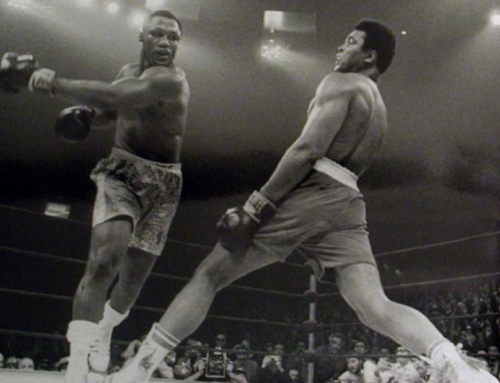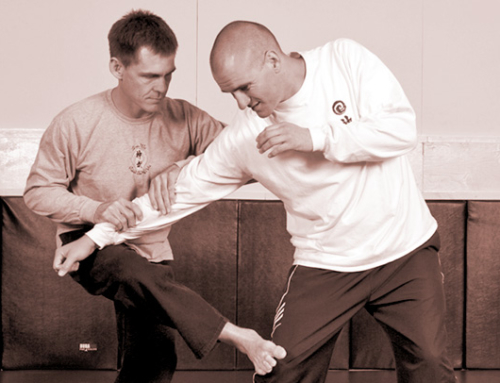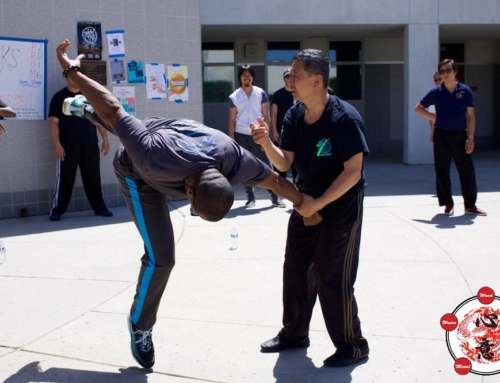Modern Xingyiquan, whether Shanxi style or Hebei style, originated from Dai Xinyiquan. My training started in Shanxi style Xingyiquan, and then later started training in Dai Xinyiquan. Based on my training in these two styles, I compare their differences in terms of structure, internal force or power, and practical fighting capability.
In terms of structure, the spine in modern Xingyiquan is kept mostly upright, which result in a stretched big frame structure, while in Dai Xinyiquan, the spine has to create a C shape curvature. This C shape allows for strong compression of the spine and the dantian. The compression of the spine and dantian using the C shape is very unique in Dai Xinyiquan. To my knowledge, no other martial arts use such compression and expansion. Dai Xinyiquan doesn’t require such a big frame, because its fundamental purpose is to create compression and expansion force, and therefore, how the movement or structure looks doesn’t really matter.
What is the fundamental purpose of compression and expansion force? Conceptually speaking, compression and expansion force is used in the creation of all things, the universe. At the point of origin before the creation of the universe, all the mass was compressed into a single point of infinite density, the black hole, followed by an explosion with outward expansion, which created everything in the universe.
In terms of internal force, modern Xingyiquan works with more linear forces or power generation, while the forces or power generation in Dai Xinyiquan are more circular and complex. Linear forces are not only easier to express, but also easier for practitioners to issue such force, and as a result, the display of force is normally fast and explosive in modern Xingyiquan. Circular forces are more difficult to express than linear forces, and to attain circular forces requires practicing movements in slow motion with soft power. Therefore, Dai Xinyiquan is normally practiced in slow motions with soft power. Fast motion and explosive power should only be performed once a practitioner has reached an advanced level in Dai Xinyiquan, but even then, it is still critical to cultivate force in slow motion with soft power.
In terms of practical fighting, Dai Xinyiquan is very compatible with boxing, particularly with the method of close-range fighting and counter-striking using shoulder-roll techniques. However, most Dai Xinyiquan practitioners don’t have the exposure to modern striking arts such as boxing or kickboxing. Also, the expression of Dai Xinyiquan is animalistic in nature, having animal-like motion and intention, making its power extremely wild and primitive, and in comparison, the expression of modern Xingyiquan’s power is more civilized.
Modern Xingyiquan as a structure based style cultivates the strength of the structure, and use it to overcome incoming forces, which means that developing a solid structure in modern Xingyiquan is critical. To neutralize incoming force in modern Xingyiquan requires adjusting the angle of the structure and the weight distribution of the structure. In terms of striking in modern Xingyiquan, the power and speed of the strikes are highly dependent on the strength and connection of the structure.
Through training both Dai Xinyiquan and modern Xingyiquan, my personal take is that the modern Xingyiquan feels like a simplified version of the original Dai Xinyiquan by a big measure. However, simplification doesn’t necessarily imply that it is bad. For practitioners aimed at getting quicker result in gaining martial arts ability, learning modern Xingyiquan would be the better approach. For practitioners who have already built a good foundation in internal martial arts may benefit more from learning Dai Xinyiquan, as the method in Dai Xinyiquan could take practitioners into much deeper layers of internal training.
Comparison of Modern Xingyiquan Five Elements & Dai Xinyiquan Five Elements




The idea of “animalistic movement” sounds a lot like “animal flavor” that I heard a Xinyi Liuhe teacher mention all the time when I first encountered Xinyi. I’m not sure I’ve heard it ever mentioned in Xingyi or Taiji.
The “animal flavor” is not mentioned in Xingyiquan, Baguazhang, or Taijiquan, because the spine is kept upright in these arts, so not much curvature is trained, whereas in Dai Xinyiquan, the curvature is trained. In Xinyi Liuhe, the curvature is trained to a lesser degree compared to Dai Xinyiquan. Even without the curvature of the spine, Xinyi Liuhe still has more “animal flavor” compared to the 3 modern internal arts, because Xinyi Liuhe mimics the animals.
But in my opinion, true animalistic power comes out when the spine is able to create the curvature, and this is not just mental imagination of you becoming an animal, it’s the physical motion of the spine curvature that makes the practitioner feels that he or she becomes an animal, and this animalistic power not easy to explain in words. It’s like asking an animal what it feels like to be the animal and what it feels like when the animal is in motion.
Therefore, if you try to explain this animalistic concept to other practitioners, they won’t be able to understand, or at best having an intellectual understanding, unless they are able to create the curvature.